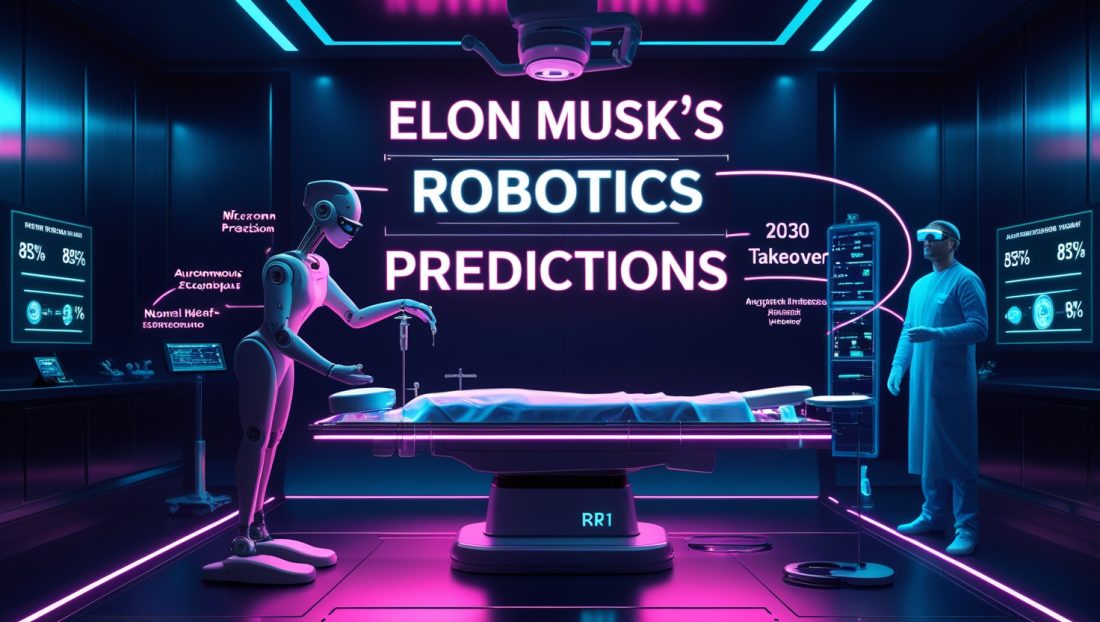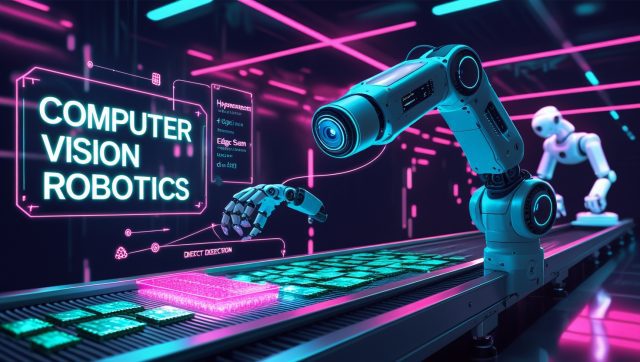What if the surgeon operating on you in 2030 isn’t human? Elon Musk, the entrepreneur behind SpaceX and Neuralink, recently declared that robots will outperform even the world’s top surgeons within five years, a bold claim reported by Fox Business. This prediction, rooted in Neuralink’s groundbreaking work with brain-computer interfaces, has sparked a firestorm of debate. Proponents argue that AI-driven systems could democratize high-quality healthcare, while critics warn of ethical quagmires and job losses. But beyond the headlines, what does the future of robotic surgery truly hold?
This article unpacks Musk’s claims, examines the current state of surgical robotics, and explores the societal implications of a world where silicon scalpel-wielders dominate operating rooms. From real-world patient outcomes to the thorny question of accountability, we separate hype from reality—and explain why this debate matters to you. For deeper insights into how AI is shaping robotics globally, check out Why AI in Robotics is Failing, which fearlessly dissects the gaps in current tech.
Note: Some examples are illustrative, reflecting real trends in the future of robotic surgery to protect privacy and data.
1. Musk’s Vision: From Neuralink to Autonomous Surgery
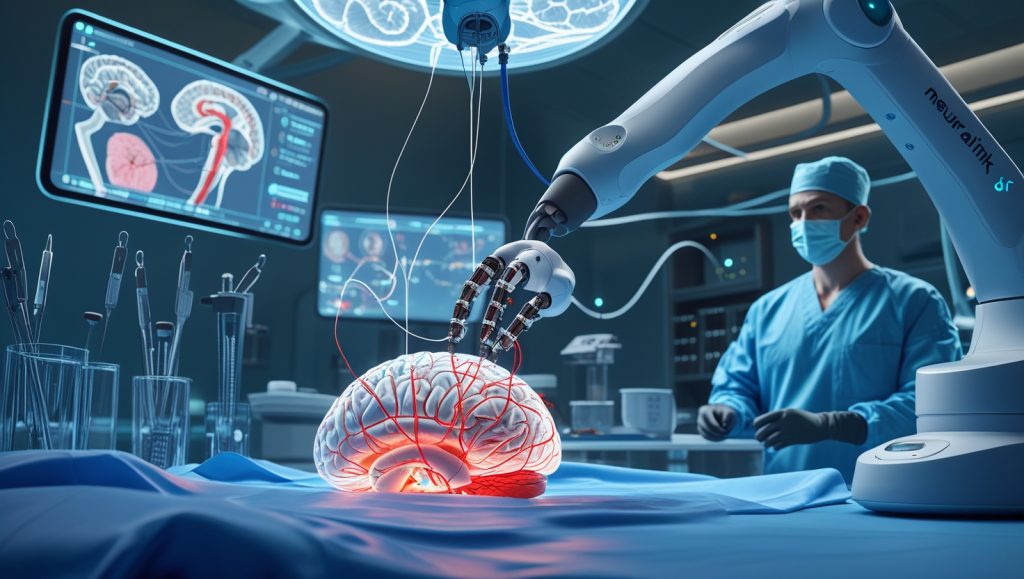
The Precision of Neuralink’s R1 Robot
Musk’s confidence stems from Neuralink’s R1 surgical robot, a system designed to implant ultra-thin electrodes into the human brain with micron-level accuracy. In early 2024, Neuralink demonstrated its R1 inserting 64 threads into a patient’s brain, avoiding blood vessels with a precision Musk called “superhuman.” While the first patient successfully controlled a computer cursor via thought, 85% of the threads later retracted—a stark reminder that even cutting-edge tech faces hurdles. The future of robotic surgery hinges on overcoming such setbacks, as Neuralink’s ambitions point to a world where precision defines outcomes.
Beyond Brain Implants: A Broader Surgical Ambition
Neuralink’s work is part of a broader trend. Companies like Medtronic and Intuitive Surgical are refining robots for everything from prostatectomies to cardiac procedures. For instance, Medtronic’s Hugo system, tested in 137 urologic surgeries across Europe, achieved a 98.5% success rate. Yet Hugo, like most systems today, remains a tool guided by surgeons—not an autonomous operator. The future of robotic surgery will likely see these tools evolve into decision-makers, a shift explored in Why Robot Surgeons Can’t Replace Humans Yet, which dives into the technical and ethical roadblocks.
Why Neuralink’s Vision Shapes the Future of Robotic Surgery
Neuralink’s R1 isn’t just about brain implants—it’s a blueprint for autonomous surgical systems. The future of robotic surgery depends on AI that can process real-time data and adapt to complex anatomies. Neuralink’s trials show promise but also expose limitations, like thread retraction, which could delay widespread adoption. Innovations like soft robotics with artificial muscles could enhance precision, making the future of robotic surgery more reliable.
Key Quote:
“Robots refine movements, but every decision is human-made.”
—Dr. Sankar Adusumilli, robotic surgeon with 2,400+ procedures
2. The Current State of Robotic Surgery: Tools, Not Colleagues
The da Vinci Legacy and Its Limitations
Since its FDA approval in 2000, Intuitive Surgical’s da Vinci system has dominated minimally invasive surgery, performing over 10 million procedures worldwide. However, da Vinci lacks autonomy; it merely translates a surgeon’s hand movements into smaller, precise motions. The future of robotic surgery must transcend these limitations to achieve Musk’s vision of surpassing human surgeons.
Real-World Example
In 2023, a da Vinci-assisted hysterectomy at Johns Hopkins took 30% less time than traditional methods, with the patient discharged in 24 hours. Yet when the robot malfunctioned mid-surgery, the team seamlessly switched to laparoscopy—a flexibility AI systems currently lack. This incident underscores why the future of robotic surgery needs robust fail-safes, a topic explored in Why Robotics in Healthcare is Reshaping Global Systems.
The Steep Climb of Surgeon Training
Mastering robotic systems requires 100-150 supervised procedures, according to a 2023 Journal of Robotic Surgery study. Dr. Linda Yang, a gynecologic oncologist, notes: “It’s like learning to play the piano while standing on one foot. The robot reduces tremors, but you’re still making every critical call.” Training will be pivotal in the future of robotic surgery, as surgeons must adapt to increasingly autonomous systems.
Why Training Defines the Future of Robotic Surgery
The future of robotic surgery isn’t just about tech—it’s about preparing surgeons for hybrid workflows where robots take on more responsibility. Current training programs lag behind rapid advancements, risking a bottleneck. Initiatives like STEM robotics competitions are fostering the next generation of innovators who could bridge this gap, ensuring the future of robotic surgery is both skilled and scalable.
3. The Great Debate: Will Robots Replace Surgeons—or Empower Them?
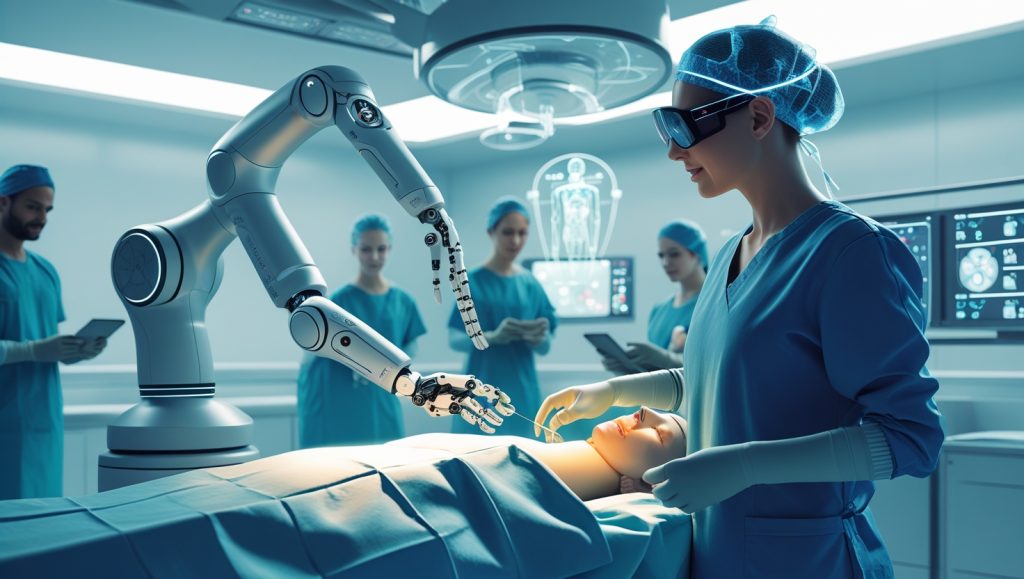
The Case for Automation
Proponents argue robots could address global surgeon shortages. The WHO estimates a deficit of 18 million healthcare workers by 2030, primarily in low-income countries. Systems like Hugo or CMR Surgical’s Versius (used in 15,000+ procedures since 2019) might bridge this gap. The future of robotic surgery could democratize access to high-quality care.
Projected Impact:
A 2024 McKinsey report suggests AI-assisted robots could reduce surgical complication rates by 21% in high-volume procedures like hernia repairs.
The Human Edge: Empathy and Adaptability
Critics counter that robots lack situational awareness. In 2022, a da Vinci robot nicked a patient’s artery during a colorectal surgery in Texas, forcing emergency intervention. The surgeon later testified, “The robot didn’t ‘feel’ resistance the way a human hand would.” This gap in tactile feedback is a key challenge for the future of robotic surgery, as discussed in Soft Humanoid Robots for Safety.
Why Empathy Matters in the Future of Robotic Surgery
The future of robotic surgery must balance precision with human intuition. Patients value empathy—something robots can’t replicate. While AI can optimize outcomes, only humans can navigate the emotional complexities of surgery. Advances in AI-driven human-robot bonding could help robots mimic empathy, but the future of robotic surgery will still rely on human oversight.
Ethical Dilemma:
“Who’s liable when a robot errs? The programmer? The hospital? We need legal frameworks before autonomy expands.”
—Prof. Rebecca Larson, Bioethics, Harvard Medical School
4. Ethical and Societal Crossroads
The Automation Paradox in Healthcare
While Musk envisions robots solving surgeon shortages, the U.S. Bureau of Labor Statistics predicts a 3% growth in surgeon jobs by 2030. The disconnect lies in task allocation: robots may handle routine procedures (e.g., cataract surgery), freeing humans for complex cases. The future of robotic surgery could redefine healthcare roles, a trend analyzed in Why Robots Solve the Labor Crisis.
Bias in the Operating Room
AI systems trained on skewed datasets risk perpetuating disparities. A 2023 Lancet Digital Health study found that algorithms for predicting surgical complications were 12% less accurate for Black patients due to underrepresentation in training data. Addressing bias is critical for the future of robotic surgery to ensure equitable care.
Why Ethics Shape the Future of Robotic Surgery
The future of robotic surgery must confront ethical dilemmas head-on. From liability to bias, unresolved issues could derail progress. Emerging frameworks, like those discussed in AI Ethics Could Save or Sink Us, will be crucial for ensuring the future of robotic surgery is fair and accountable.
5. The Road to 2030: Breakthroughs Needed
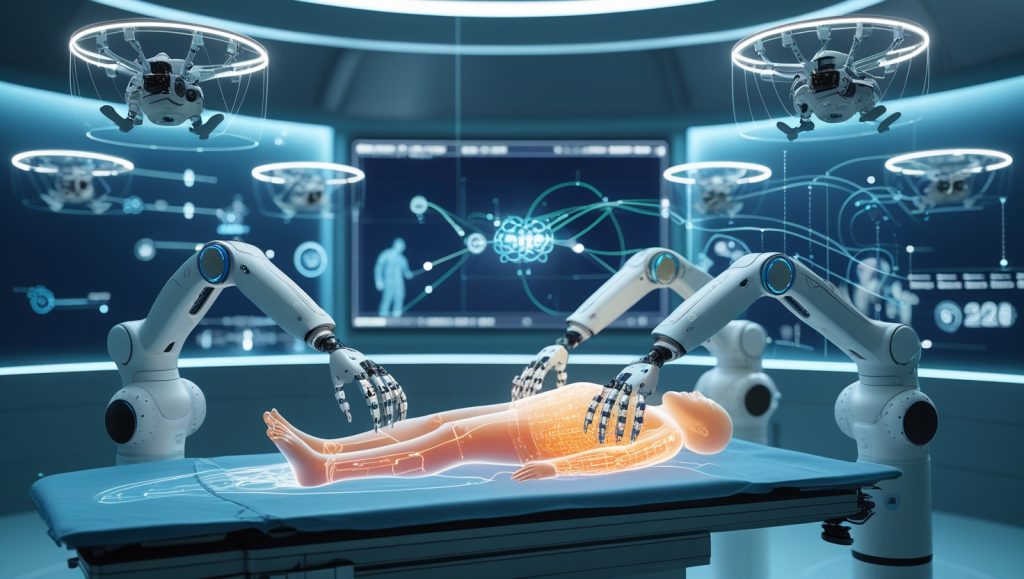
Technical Hurdles to Overcome
- Real-Time Decision-Making: Current AI excels at pattern recognition but struggles with novel scenarios.
- Tactile Feedback: Startups like SynTouch are developing sensors that mimic human touch, critical for delicate tissues.
The future of robotic surgery depends on solving these challenges, as highlighted in Breakthrough Magnetic Propulsion Robotics, which explores innovative control systems.
Neuralink’s Ambitious Timeline
Neuralink aims to implant 11,000 devices annually by 2030, targeting conditions from paralysis to depression. Competitors like Synchron Inc. (which received FDA approval in 2022 for a less invasive brain interface) are close behind. The future of robotic surgery will be shaped by such rivalries, driving innovation at breakneck speed.
Why Innovation Drives the Future of Robotic Surgery
The future of robotic surgery rests on relentless innovation. From tactile sensors to AI algorithms, breakthroughs will determine whether Musk’s timeline is feasible. Projects like untethered deep-sea robots show how cross-disciplinary robotics advancements could inspire surgical tech, accelerating the future of robotic surgery.
FAQ: Your Top Questions Answered
Will robotic surgery lower healthcare costs?
Initially, no. da Vinci systems cost $2 million, but prices may drop as competition grows. Over time, reduced complications could save billions.
Can robots handle emergency surgeries?
Unlikely soon. Trauma surgery requires rapid, adaptive thinking—still a human forte.
Are robotic surgeries safer?
For routine procedures, Sloan, G. yes. A 2024 meta-analysis showed 31% fewer infections in robot-assisted joint replacements.
Collaboration, Not Replacement
The future of robotic surgery isn’t about machines replacing humans—it’s about synergy. As Dr. Adusumilli reminds us, “Every patient’s anatomy tells a different story.” Robots may master precision, but human judgment, honed over millennia, remains irreplaceable. For more on how robotics is transforming industries, explore Why Robotics in Entertainment Will Dominate 2030.
Stay ahead of the curve. Subscribe to our newsletter for more updates.
